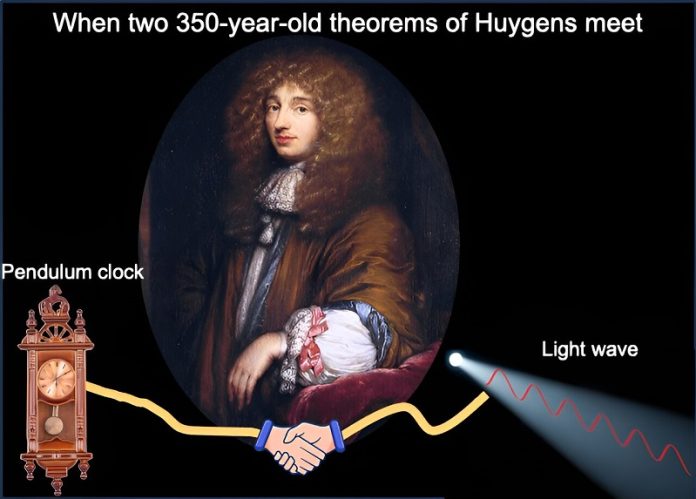
For hundreds of years, scientists have been trying to figure out what light is really made of.
Is it a wave that flows like water or a particle like a tiny speck of dust?
The debate started way back in the 1600s with famous scientists like Isaac Newton and Christiaan Huygens.
Now, modern researchers at Stevens Institute of Technology have made an exciting discovery using a very old idea.
The team was led by Xiaofeng Qian, a physics professor. They used a theory from a book written by Huygens in 1673.
This old theory is usually used to understand things like how clocks tick or how a fake arm moves.
It talks about how the energy needed to rotate or spin something depends on how heavy it is and around what point it spins. But guess what? Qian and his team found out that this old theory could also be used to understand light!
“But how can you use a theory about things with weight to understand light, which doesn’t weigh anything?” you might ask. Good question!
The team thought of the intensity (or brightness) of light as if it was an object’s weight. They then used the old theory to understand it better.
What they discovered is super interesting. They found out that two properties of light—entanglement and polarization—are directly connected.
In simple terms, entanglement is how particles of light (photons) can be linked together, no matter how far apart they are. Polarization is the direction in which light waves vibrate.
What’s cool is that when one of these properties goes up, the other goes down. Because of this connection, scientists can now measure one property to guess the other.
Qian said, “We haven’t solved the big puzzle of whether light is a wave or a particle, but we’ve found new ways these two ideas are linked. Not just in complicated quantum physics but in the simpler classical ideas of light and physical objects too.”
This is a big deal for science because light is used in so many technologies, like lasers and fiber-optic cables that give us the internet. If we understand light better, we can make these technologies even better.
What’s next? The team thinks their discovery could even help us understand the weird and wonderful world of quantum physics—where things can be in two places at once or spin in opposite directions at the same time.
Qian thinks that maybe, just maybe, they can use mechanical systems like clocks or spinning objects to simulate and understand these strange behaviors of quantum stuff.
So, a 350-year-old idea is helping us make new discoveries about light and possibly even the tiniest particles in the universe.
Like Qian said, “This research is making the world simpler to understand by showing us how different laws of physics are connected in ways we never thought possible.” And that’s a bright idea, don’t you think?
The study was published in the journal Physical Review Research.
Follow us on Twitter for more articles about this topic.



